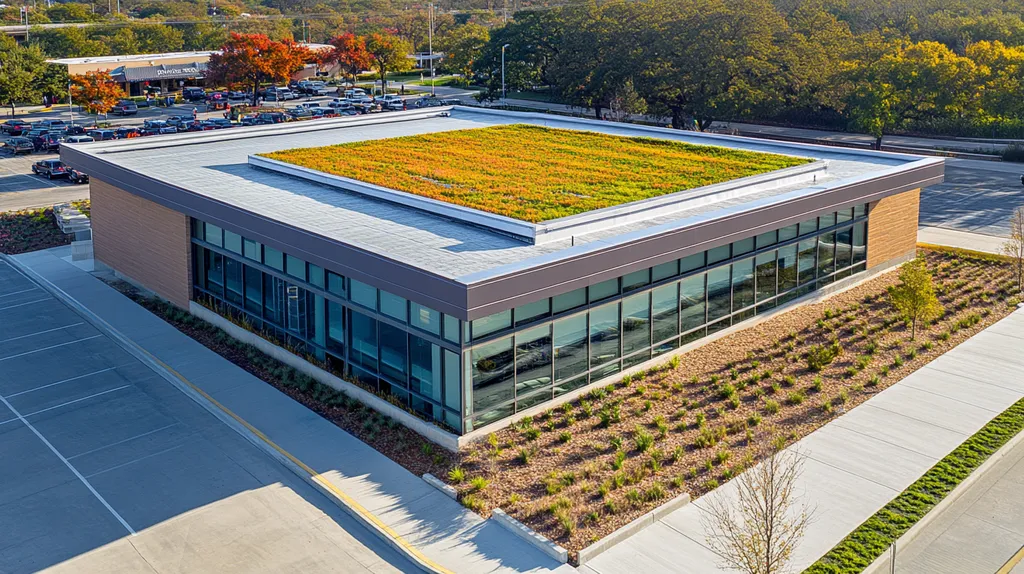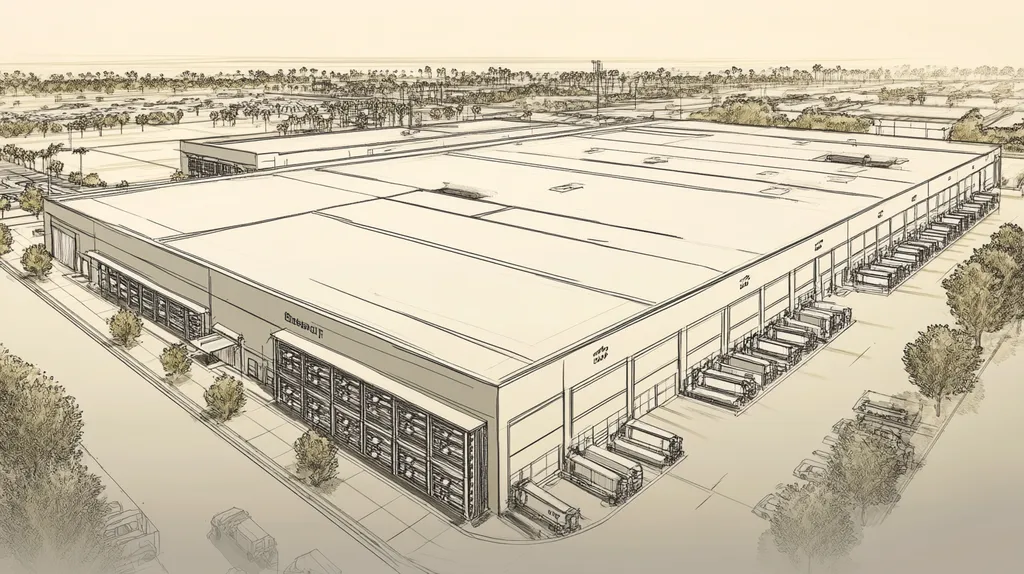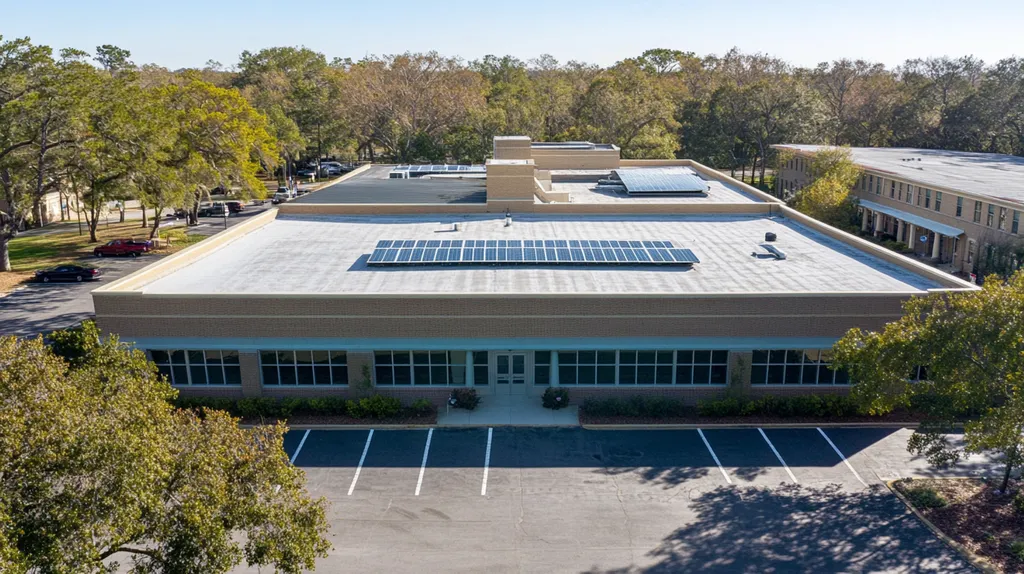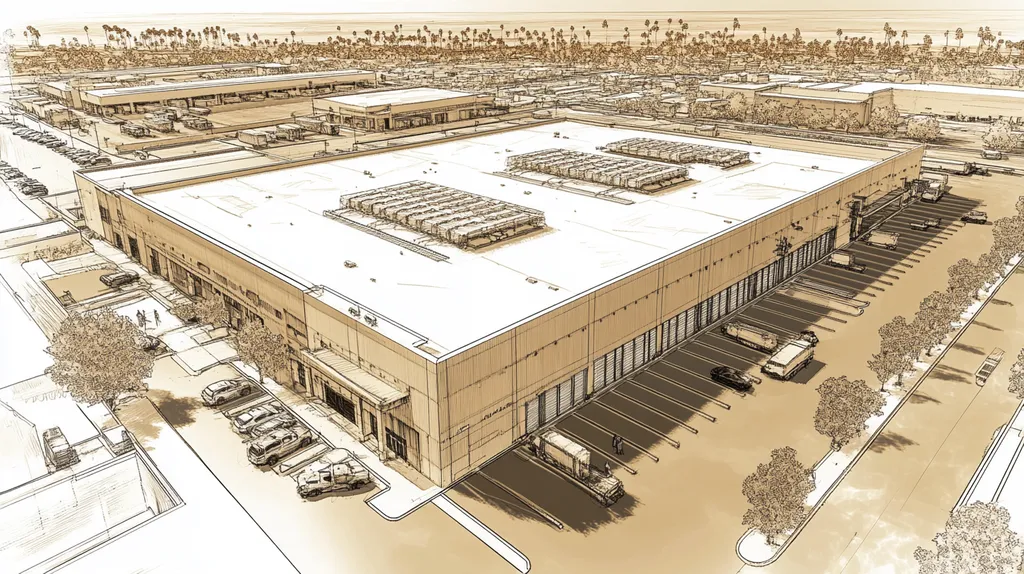Roof edge design has emerged as a critical battleground in commercial building protection, with pest-related damage now accounting for over $6 billion in annual repairs across North America. The intersection of water management and pest resistance at roof edges represents a particularly vulnerable point in building envelope systems.
While traditional approaches focused primarily on water diversion, modern edge design must address multiple vectors of building degradation simultaneously. Understanding the relationship between proper edge design and pest prevention can mean the difference between a secure facility and one plagued by costly infestations.
This analysis examines common industry misconceptions about roof edge design while providing evidence-based solutions for property owners and facility managers seeking to protect their investments.
SECTION 1: COMMON MISCONCEPTIONS
Many commercial property owners and facility managers underestimate the critical role that roof edge design plays in pest resistance. Ignoring this factor can lead to expensive damage and significant health risks. For instance, poorly designed drip edges can allow pests like rodents to invade properties, subsequently increasing maintenance costs and potential for infestations. Understanding common misconceptions about roof edge components is essential for effective pest management and ensuring long-term building health.
Ignoring Drip Edge Importance
Drip edges are often overlooked components of roofing systems, yet their significance cannot be overstated. Many mistakenly assume their sole purpose is aesthetic or to direct water away from the roof. In reality, a well-designed drip edge is vital for preventing pests from entering the building.
When water is improperly channeled, it creates a damp environment that naturally attracts pests. Additionally, ineffective drip edges can lead to gaps, granting rodents and insects easy access. Recognizing the importance of this feature is the first step toward effective pest prevention.
A properly functioning drip edge not only protects the roof but also enhances the overall integrity of the building. By investing in this essential design element, property owners can significantly reduce the likelihood of infestations.
Understanding the critical role of drip edges empowers property owners to make informed decisions that prioritize the long-term health of their buildings.
Believing All Drip Edges Are Equal
Another prevalent misconception is that all drip edges offer the same level of protection. This belief can lead to misguided decisions, as different materials and designs can provide varying degrees of pest resistance and durability. Some drip edges might wear out more quickly than others, forming potential infestation points.
For example, aluminum and vinyl drip edges present contrasting levels of durability and effectiveness against pests. Selecting the wrong material can result in greater maintenance costs later on. A thorough comparison of options can help property owners choose the most appropriate materials for their roofs.
Moreover, the design of drip edges can influence pest behavior directly. Certain designs include features specifically engineered to deter pest entry, while others do not. Recognizing these variations helps facility managers make smarter choices for their roofing systems.
Investing in the right type of drip edge is crucial for ensuring enduring pest resistance and protecting valuable property investments.
Overlooking Material Choices
Finally, the choice of materials significantly impacts the effectiveness of roof edges in keeping pests out. Some materials may be prone to weather-related deterioration, increasing vulnerabilities over time. For example, while a wooden drip edge may offer visual appeal, it also attracts termites and other insect threats.
In contrast, durable materials like metal can withstand harsh climates and create a more reliable barrier against pests. Selecting the right materials based on the specific location and climate of the building substantially enhances pest resistance.
Additionally, certain materials can reduce moisture retention, another major factor that attracts pests. By carefully considering material choices during the roofing design phase, property owners can minimize future risks.
Smart material selection is a crucial aspect of roof edge design that affects both pest resistance and the overall longevity of the roofing system.
SECTION 2: PRACTICAL IMPLICATIONS
The design of a commercial roof edge greatly influences the overall integrity and longevity of a building. Neglecting this key element can result in serious consequences, including water damage, structural risks, and pest infestations. With over 40% of roofing problems linked to drainage issues, the importance of a well-planned roof edge design becomes clear. This section delves into the critical ramifications of inadequate roof edge design, focusing on water damage prevention, pest control, and the long-term maintenance of roofing systems.
Water Damage and Structural Risks
Water pooling at the roof edges poses a severe threat to building integrity. Poorly designed edges can cause water to accumulate, leading to leaks and compromising structural elements. A frequent issue arises when debris blocks drainage systems, exacerbating water retention along the edges.
When water remains stagnant, it seeps into roofing materials, weakening the essential support structures. This deterioration can result in costly repairs, and in some cases, may even require a full roof replacement.
Neglecting effective roof edge design dramatically undermines the structural integrity of the building. By implementing designs that reduce water accumulation, building owners safeguard their investments against extensive and costly damage.
This concern is especially crucial in urban areas, where heavy rainfall can lead to swift and severe water-related incidents. A robust roof edge not only protects the roof itself but also ensures the safety of the entire building.
Pest Infestation and Health Hazards
The vulnerabilities introduced by inadequate roof edges can invite pest infestations, creating significant health hazards for tenants and staff. Areas where standing water and debris collect become a magnet for rodents and insects.
Rodents are notorious for damaging insulation and electrical systems, which leads to increased operational costs. In severe cases, property managers may need comprehensive pest control interventions, further inflating unplanned expenses.
Moreover, pests are known carriers of harmful diseases, posing serious health threats to those who occupy the building. A thorough understanding of these risks highlights the urgent need for proper roof edge design as a critical line of defense against infestations.
Building owners must make preventive design choices to foster a safe and healthy environment. By prioritizing effective edge design, they can drastically decrease the likelihood of pest invasions.
Impact on Roof Lifespan and Maintenance
The lifespan of a roofing system is inherently linked to its edge design. A thoughtfully constructed roof edge promotes efficient drainage and reduces wear on roofing materials over time.
When roof edges are poorly designed, building owners face escalating maintenance costs. Routine inspections become critical to identify potential issues that could lead to costly repairs if left unaddressed.
For instance, facility managers may find themselves replacing detailing or flashing that fails due to inadequate drainage. This situation ultimately shortens the roof’s lifespan and increases costs.
Conversely, investing in sound roof edge design can significantly enhance the longevity of a roofing system. Timely maintenance and proactive design choices lead to lower expenses and longer-lasting roofs, safeguarding initial investments and ensuring the building’s ongoing safety and functionality.
SECTION 3: COST OF MISINFORMATION
The stakes of misinformation in commercial roofing design are alarmingly high. Ignoring crucial elements like water management can result in catastrophic financial fallout. In fact, around 40% of commercial property damage claims are tied to water leaks. A keen understanding of these issues is paramount for making informed decisions that safeguard valuable investments.
Financial Consequences of Water Damage
Water intrusion can trigger a cascade of financial repercussions that add up quickly. Repairing a water-damaged roof can easily cost thousands of dollars, while the potential for structural damage can escalate these expenses dramatically. When mold is introduced due to prolonged exposure, remediation costs can soar, averaging over $15,000.
Additionally, ongoing water damage can compromise the integrity of the roofing system, leading to premature replacements that can range from tens to even hundreds of thousands of dollars, depending on the building’s size and complexity.
Water damage doesn’t just weigh on repair budgets; it can also disrupt business operations. Such interruptions can result in lost revenue and incalculable costs related to downtime. Therefore, the financial risks associated with inadequate roof edge design are substantial.
By investing in pest-resistant roofing designs from the start, building owners can effectively shield themselves from these costly outcomes, protecting not just their roofs but their entire investment portfolio.
Costs Associated with Pest Control
Overlooking pest resistance in roofing design can lead to severe pest infestations, creating pressing financial concerns. Pests like rodents and insects find vulnerable roof edges easy to exploit, which can prompt significant pest control expenses. Businesses might spend an average of $500 to $2,000 each year just to manage pest issues.
These figures fail to account for the potential property damage caused by pests. Infestations can wreak havoc on insulation and even the structural components of a building, with repair costs that often far exceed preventive maintenance investments.
Moreover, business owners could face regulatory fines if pest issues lead to health violations. These legal implications underscore the urgent need for a thoughtful roof edge design strategy.
Adopting a well-designed, pest-resistant roof can lead to substantial savings over time by diminishing the need for pest control interventions. Prioritizing this aspect during the design phase ultimately protects cash flow and reinforces a building’s resilience.
Long-Term Maintenance and Repair Expenses
The common misconception that roofing maintenance is a one-time expense can prove financially disastrous. For roofs designed without pest resistance, maintenance requirements can rapidly escalate, resulting in higher repair costs over time. Buildings lacking effective designs often demand frequent inspections and repairs, consuming valuable resources.
Research indicates that routine maintenance costs can rise by up to 20% for properties without sound pest-resistant features compared to those that include them. This includes both labor and material costs that accumulate progressively.
Furthermore, inefficient roofing systems tend to experience greater wear and tear, which means that building owners may face escalated replacement costs much sooner than anticipated, further eroding profit margins.
By prioritizing pest-resistant designs from the beginning, property owners can curb ongoing maintenance expenses. Making these proactive design choices ensures that long-term costs stay manageable and predictable, ultimately protecting their investments.
SECTION 4: REALITY CHECK
The design of roof edges is critical for more than just aesthetics; it is essential for pest resistance and structural integrity. Alarmingly, studies reveal that up to 25% of roofing failures can be linked to inadequate roof edge layouts, often resulting from pests and water-related issues. This section will explore the indispensable role of drip edges, the necessity for proper installation, and the importance of compliance with building codes to ensure the functionality of roofing systems.
Role of Drip Edge in Roof Design
The drip edge functions as a protective barrier against both pests and water damage, primarily at the roof’s eaves and rakes. This design element effectively channels water away from underlying structures, reducing the risk of mold growth and pest attraction. Without a properly installed drip edge, debris tends to accumulate, creating an inviting habitat for insects.
Moreover, when installed correctly, the roof edge not only combats pest ingress but also promotes efficient water drainage. This function is key in enhancing the overall durability of the roof, which, in turn, preserves the building’s structural integrity.
The consequences of neglecting a proper drip edge can be severe. Property owners could incur substantial pest control costs and unanticipated roofing repairs. Thus, incorporating an effective drip edge design is vital for the long-term management and safeguarding of the facility.
In essence, the drip edge is not just a minor detail but a fundamental component in defending against pests and ensuring optimal roof performance.
Importance of Proper Installation
Proper installation of roofing components is an absolute necessity. Mistakes during installation can void warranties and spell disaster for the roof’s longevity. In terms of pest prevention, improperly installed roof edges can inadvertently create openings that allow insects and rodents to invade the building.
Gaps in the roof edge serve as entry points for unwanted guests, and unless installers pay close attention to detail, critical aspects of the installation could be overlooked, setting the stage for future infestations.
Inconsistent installation practices can further exacerbate issues, leading to water pooling that attracts pests and contributes to structural degradation. It is crucial for installers to be certified and dedicated to best practices to maintain effective pest resistance.
In conclusion, the quality of installation plays a direct role in both roof durability and pest management. Ongoing education and training for installers are essential to securing a resilient roofing infrastructure.
Compliance with Building Codes
Adhering to local and national building codes is paramount for effective roof edge design. These regulations provide guidelines on installation procedures and material specifications, ensuring roofs can withstand environmental stresses. Noncompliance can lead to significant legal consequences, as well as increased risks related to safety and pest resistance.
For example, specific codes may dictate the materials and designs necessary for structural integrity and pest prevention. Skipping these requirements can elevate the risk of mold growth and pest invasions, jeopardizing the overall functionality of the roof.
Besides adherence to codes, routine inspections help ensure that installations meet required standards. These checkpoints are essential for monitoring the effectiveness of the roof edge design. Ignoring compliance not only raises the potential for pest problems but also leads to inflated repair costs in the long run.
In summary, compliance with building codes is integral to effective roof edge design. Following these regulations helps protect investments by reducing risks associated with pests and ensuring the long-term performance of roofing systems.
SECTION 5: EVIDENCE-BASED ALTERNATIVES
Pest control remains a formidable challenge for building owners managing commercial roofing systems. Every year, pests contribute to millions of dollars in damage and can create serious health hazards for occupants. Choosing the right roof edge design is critical to bolstering pest resistance while maintaining functionality and compliance with building codes. This section examines various types of drip edges, the benefits of selecting specific materials, and presents successful case studies, offering a thorough overview of effective solutions.
Types of Drip Edges for Different Roofs
Diverse roofing systems necessitate customized drip edge designs to effectively prevent pest intrusion. For flat roofs, a flush-mounted drip edge efficiently directs water away from the fascia, significantly reducing pest entry points. On the other hand, sloped roofs benefit from a projecting drip edge that promotes proper runoff, eliminating the water pooling that attracts insects.
Metal drip edges are widely used for their durability and effectiveness against rodents and insects, serving as a strong barrier. While plastic or vinyl options may perform well in less demanding environments, they may not always deliver the same level of protection. Recognizing the unique requirements of each roofing type is essential for selecting the most effective edge design.
In built-up roofing systems, a gravel stop drip edge becomes particularly beneficial. It securely holds loose gravel in place while providing an added barrier against pests. This proper selection of drip edge type ensures a robust defense against potential pest infiltration.
Benefits of Specific Materials and Designs
The choice of materials in roof edge design plays a pivotal role in pest protection. High-quality metals like aluminum and galvanized steel not only offer durability and corrosion resistance but also contribute to long-term performance. These materials impede pest access while enduring harsh environmental conditions.
Moreover, features like weep holes in metal edges facilitate effective drainage, reducing stagnant water—an inviting pool for pests. Enhanced sealing techniques decrease gaps that insects could exploit as entry points.
Innovative design elements, such as integrated pest control systems or specialized protective coatings, add extra layers of security against pests. Such choices not only prolong roof life but also reinforce the entire structure’s resilience against pest threats.
Case Studies of Successful Implementations
Numerous organizations have successfully implemented evidence-based roof edge designs to tackle pest issues. A notable university in the Midwest embraced a comprehensive roof edge system featuring a metal drip edge along with integrated pest control measures, leading to a striking 30% reduction in pest-related complaints within just the first year.
In another case, a retail facility opted for a sloped drip edge design paired with advanced sealing techniques. This proactive approach resulted in a significant decrease in pest activities during peak seasons, preserving both the building’s structural integrity and enhancing the customer experience.
These case studies manifest the tangible benefits of implementing thoughtful roof edge designs for pest resistance. By investing in tailored solutions, property owners can not only safeguard their assets but also foster a safer environment for their occupants.
SECTION 6: TEST AND VERIFY
Safeguarding a commercial roof edge from pests involves more than just the initial installation; ongoing testing and verification are essential for maintaining effectiveness. Without regular inspections, minor problems can evolve into costly repairs and infestations. A consistently maintained roof edge can substantially reduce pest presence and water intrusion, both of which pose significant risks to property owners.
Inspecting Drip Edge Effectiveness
The drip edge serves a crucial role in preventing water from penetrating the roofing system and attracting pests. Property owners should conduct inspections of the drip edge at least twice a year to verify its functionality. Even small gaps or visible damage can create pathways for pests and increase water-related issues.
During these inspections, it’s vital to look for debris accumulation around the drip edge. Leaves and other organic materials can trap moisture, creating inviting conditions for pest breeding. Immediate removal of such debris will enhance the efficacy of the drip edge.
Simply visual inspections may not reveal all weaknesses. Utilizing specific tools, such as moisture meters, can help in identifying areas of water infiltration, allowing for timely interventions.
A practical test to evaluate the drip edge’s functionality is a water test, simulating rain conditions. This method helps visualize how efficiently water drains off the roof edge, confirming that the design effectively directs water away.
Conducting Regular Roof Inspections
Establishing a routine inspection schedule is crucial for maintaining the roof edge’s integrity and preventing pest issues. A complete roof assessment should ideally be carried out every six months or after significant weather events to address potential problems early.
Inspecting both the interior and exterior of the roof is vital. Signs of pest activity, such as droppings or nests, paired with wet areas or stagnant water, can indicate underlying issues that demand attention.
Documenting the findings from each inspection creates a historical record that aids property owners and facility managers in tracking changes over time. This detailed log can also assist with warranty claims or future repairs.
Engaging with certified roofing professionals can enhance the inspection process. Their expertise enables them to spot subtle signs of damage that may be overlooked, contributing to comprehensive building maintenance.
Monitoring for Pest and Water Issues
Implementing a monitoring system focused on pests and water issues can greatly enhance roof edge management. This system should involve regular evaluations of drainage systems and the surrounding landscape, as standing water often signals potential problems that could lead to both pest attraction and water damage.
Installing pest deterrents, such as screens and barriers, near roof edges can also help minimize infestation risks. Regular checks on these barriers are essential to ensure they continue to function effectively.
Immediate response to signs of water intrusion is critical. Observing unusual stains or discoloration on walls or ceilings may indicate leaks stemming from the roof edge, prompting timely repairs to avoid more extensive damage.
Finally, integrating advanced technology like moisture sensors allows for real-time monitoring of roof conditions. This proactive approach enables property owners to act promptly, preventing minor issues from escalating into significant repairs or pest infestations.
Looking Ahead
With pest-related damage now exceeding $6 billion annually in commercial buildings, the importance of proper roof edge design cannot be overstated.
The evolution of commercial roofing has shown that integrated pest resistance at roof edges is no longer optional, but essential for protecting valuable assets.
As building technologies advance, the intersection of water management and pest control continues to drive innovation in edge design, demanding greater attention from property owners and facility managers.
The evidence is clear: investing in proper roof edge design and maintenance yields substantial returns through reduced pest control costs, prevented water damage, and extended roof lifespans.
Those who embrace these evidence-based approaches to roof edge design will find themselves better positioned to protect their investments in an increasingly challenging property management landscape.
FREQUENTLY ASKED QUESTIONS
Q. Why is commercial roof edge design important for pest resistance?
A. Effective roof edge design plays a crucial role in preventing pest entry. A properly constructed drip edge helps direct water away and minimizes damp environments that attract pests. By addressing these elements, commercial property owners can significantly enhance their buildings’ pest resistance, ultimately safeguarding their investments.
Q. How does a poorly designed commercial roof lead to water damage?
A. A poorly designed roof edge can cause water to pool, leading to leaks and structural damage. This accumulation tends to weaken essential support systems and can create an inviting environment for pests. Effective drainage design is vital to prevent these costly and damaging situations.
Q. What financial risks come with inadequate commercial roof design?
A. Inadequate design can result in significant financial repercussions, such as costly repairs from water damage and pest infestations. The average expenses for remediation can escalate quickly, especially when mold is involved. Building owners must prioritize proper design to mitigate these potential costs.
Q. Why is adhering to building codes crucial for roof edge design?
A. Compliance with building codes ensures that roof edges are designed to withstand environmental stresses and resist pests. Non-compliance can lead to safety hazards, legal complications, and increased risks of mold and infestations. Regular inspections alongside adherence protect investments and prevent costly repairs.
Q. How do different materials affect commercial roof edge performance?
A. Material selection is crucial for pest resistance and longevity. Durable metals, like aluminum, provide effective barriers against pests and withstand harsh weather. In contrast, materials like wood can attract termites, creating vulnerability. Careful consideration of materials enhances overall roof edge performance.
Q. What regular maintenance is required for commercial roof edges?
A. Regular inspections should be conducted at least twice a year to maintain roof edge integrity. Inspecting for debris accumulation, checking for gaps or damage, and addressing potential water issues are vital. Ongoing maintenance ensures effective pest resistance and protects against water-related damage.
Q. What innovative solutions can enhance pest resistance in roof designs?
A. Innovative solutions include integrated pest control systems and advanced sealing techniques. Features like weep holes in metal edges promote drainage and reduce stagnant water. Selecting high-quality materials also plays a role in enhancing designs that effectively deter pests, ensuring long-lasting protection.










